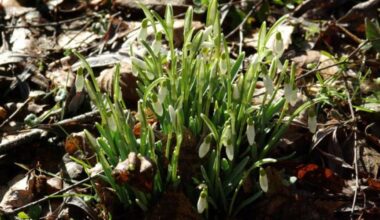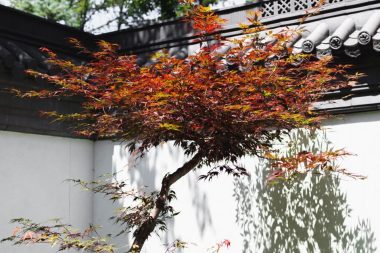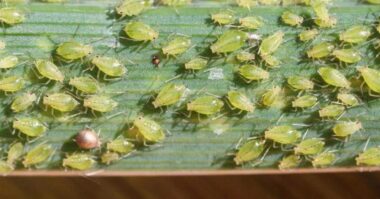Every day, the respiratory system filters 8,000 liters of air to supply oxygen to the blood through the 300 million alveoli in our lungs. Lungs are associated with healthy skin and immune system. Therefore, it is important to care for and strengthen your lungs and respiratory system.
You will find in nature a series of plants that can protect and repair the human respiratory system. Most of the herbs known today for their respiratory properties have been used as home remedies for centuries, and their benefits are often well known by popular opinion.
Here is a list of 14 plants that will help you breathe in your daily life, including one that you can place in your room to sleep without any risk.
-
Contents
1) Elecampane, Inula helenium
Elecampane is suitable for people who catch cold easily in winter and whose lungs are congested. It warms the respiratory system and stimulates the expectoration of mucus. Elecampane improves the functioning of the immune system by increasing lymph circulation. On the other hand, its bitterness and essential oils stimulate digestion and reduce intestinal gases.
Use: Boil the elecampane root for about ten minutes, at a rate of one or two teaspoons per cup of hot water.
-
2) Eucalyptus
Originally from Australia, its properties are well known to Aboriginal communities, who have used it for many years to heal wounds, treat infections and prepare infusions to relieve congestion, colds and fevers through inhalations.
Today, eucalyptus is a common ingredient in cough remedies and syrups. Its effectiveness is largely due to cineole (eucalyptol), a terpene with strong medicinal potential, ideal if you suffer from sinusitis, bronchitis or bronchial asthma. It is also a common ingredient in liquid soaps and antiseptic sprays because of its powerful germicidal properties.
-
3) Oregano
Oregano has so many health benefits that it should be present in every medicine cabinet, and in every kitchen.
These benefits come mainly from its content of carvacrol and rosmarinic acid, two natural phenols with antihistamine and decongestant properties that will have direct benefits on the respiratory tract and airflow in the nasal passages.
It is also an extremely effective antibiotic since it will be able to eliminate a large number of fungi and bacteria that can affect the pulmonary area. Moreover, the antiseptic properties of this plant are so remarkable that Jean Valnet, author of “L’aromathérapie”, claims that the strength of oregano oil would be able to sterilize wastewater.
-
4) Borage, Borago officinalis
Borage is a refreshing plant that moistens dry and irritated lungs. It is less suitable when the lungs are obstructed by mucus, but it is useful for those who suffer from dry air, often caused by electric heating or air conditioning.
The borage flower, because it is luminous, reminds us that it relieves physical or emotional exhaustion as well as melancholic and depressive states.
Use: The flowering tops of borage are dried and then infused for a few minutes. Two teaspoons per cup of water are sufficient.
-
5) Sage
Sage leaves give off an intoxicating scent from its essential oils, which is why sage infusions are a very popular drink to treat lung problems and quite common respiratory illnesses such as sinusitis, sore throat or cough.
Its rich aromatic properties come from its high concentration of pinene, a terpene known for its expectorant, bronchodilator, anti-inflammatory and antiseptic effect.
-
6) Hyssopus officinalis
Hyssop is a plant with a warming and drying character, which is excellent to eliminate the drop in the nose and decongest the congested lungs. It is also slightly antiseptic and expectorant.
Its content in essential oils promotes digestion and prevents intestinal gas while giving it a very slightly aniseed flavor that complements well infusions. Pregnant women and epileptics should avoid significant doses of hyssop.
Use: Infuse 1 tablespoon of flowering tops per cup of water for about ten minutes.
-
7) Molène, Verbascum thapsus
This plant is without equal to reinforce, dilate and regenerate the bronchi. Thanks to its emollient and astringent effects, it humidifies the too dry mucous membranes or dries them if they are too wet.
Mullein also helps the lymph to circulate and decongests the lymph nodes, thus helping to improve immunity. It should be adopted for a few weeks, as its effect is progressive (although spectacular for asthma), to prevent bronchitis or to restore the lungs of smokers, among others.
Use: Infuse 1 tablespoon of dried leaves per cup of water for five to ten minutes, in case of irritation or tickling, remove its microscopic hairs with a coffee filter.
-
8) Lobelia
Did you know that horses that eat lobelia (Lobelia) breathe deeper than others? However, its benefits don’t stop with horses.
Indeed, according to Potter’s Encyclopaedia of Botanical Drugs and Preparations, this beautiful plant with purple flowers is one of the most important discoveries in phytotherapy.
This is due to an alkaloid called lobelin which is generally used in commercial cough, cold or bronchitis medicines, as it allows for deeper and easier breathing.

-
9) Astragalus membranaceus
Astragalus is a warming plant that tones the lungs and prevents respiratory infections. Taken in prevention over a period of a few weeks, the root of this formidable plant strengthens us against stress, cold and winter diseases.
The astragalus acts on the immune system, lightens the blood pressure slightly and supports the action of the heart. However, it is not suitable for pregnant women or people with excess mucus or whose body contains many toxins.
Use: Boil 10 to 20 g of roots per liter of water for about 40 minutes and drink regularly for a few weeks. The decoction of astragalus makes an excellent soup base, thus becoming part of your diet.
-
10) Thyme
Thyme has been used in infusions for hundreds of years to strengthen the immune system and reduce respiratory infections, thanks to its powerful essential oils rich in monoterpenes, such as thymol and carvacrol, whose properties are antiseptic and eliminate all kinds of viruses and bacteria. Moreover, it will be ideal to calm coughs and fight against nasal congestion!
-
11) Pulmonaria
In the early 17th century, people believed that plants that resembled certain human physical attributes could be beneficial to the part of the body they resembled.
Some believed that Pulmonaria had the appearance of human lung tissue and were used as an effective remedy for respiratory diseases. Nowadays, these plants are highly valued by herbalists for their content of flavonoids such as quercetin and kaempferol, which are widely used in remedies to protect the mucous membranes of the respiratory tract as well as to produce a good expectorant effect.
-
12) Mint
The main chemical component of this popular plant is obviously menthol, which will act as an effective decongestant and reduce inflammation of the nasal membranes, making breathing much easier.
Menthol is also an expectorant, which means that it will relax the muscles of the airways and eliminate mucus from the lungs. How many of us have never used therapeutic chest balms and other menthol-based inhalers to treat a cold?
-
13) The Great Elecampane
According to legend, the Great Elecampane (Inula helenium) was born when the tears of Helen of Troy watered the earth. Also nicknamed horse’s eye, this plant has been used for a very long time in Chinese medicine, but also by the Indians, Greeks and Romans to relax and calm the respiratory muscles.
Elecampane owes its healing properties to two specific compounds called inulin and alantolactone. When the lining of the bronchial tubes is swollen and reddened, it can be very difficult and painful to breathe. Inulin relieves the bronchial ducts, while alantolactone, an expectorant, will eliminate congestion and make breathing easier.
-
14) Licorice root
Licorice is one of the most widely consumed medicinal plants in the world. In traditional Chinese medicine, you will find more formulas than with any other plant since it is supposed to harmonize the effect of all the others.
Licorice is very soothing and will relieve irritations in the mucous membranes of the throat and especially the lungs. Its expectorant action is produced by saponins, triterpenes whose effect is similar to a detergent, since it will soften the mucus present in the respiratory tract so that the body can expel the mucus more easily.
Is it dangerous to put a plant in the room?
It is not advisable to sleep in a room filled with plants, because at night they release carbon dioxide, which can be harmful to sleep and health. That’s right, except for sansevieria, or “mother-in-law’s tongue”.
This plant with the tapered leaves, long and rigid, actually produces more oxygen at night than during the day! In this regard, recent scientific studies have shown that a high level of oxygen in the bedroom increases the quality and especially the duration of sleep by about 10%. Ventilating your room during the day, or sleeping with the window open when the weather allows it, contribute, of course, to create this favorable environment.
The sansevieria is a plant easy to maintain, which is suitable for all exposures and requires little care. It does not need to be watered often.
The only downside is that it does not necessarily meet the classic standards of design and plant aesthetics.
Summary
From ancestral habits to modern programs, the use of medicinal plants for a good respiratory comfort is nowadays recognized and widely referenced. It is still necessary to know which plant to turn to when one feels a respiratory discomfort.
Here, we present a detailed list of 14 plants that have the benefits of helping you breathe, including one that you can put in your room without risk: The sensevieria.









